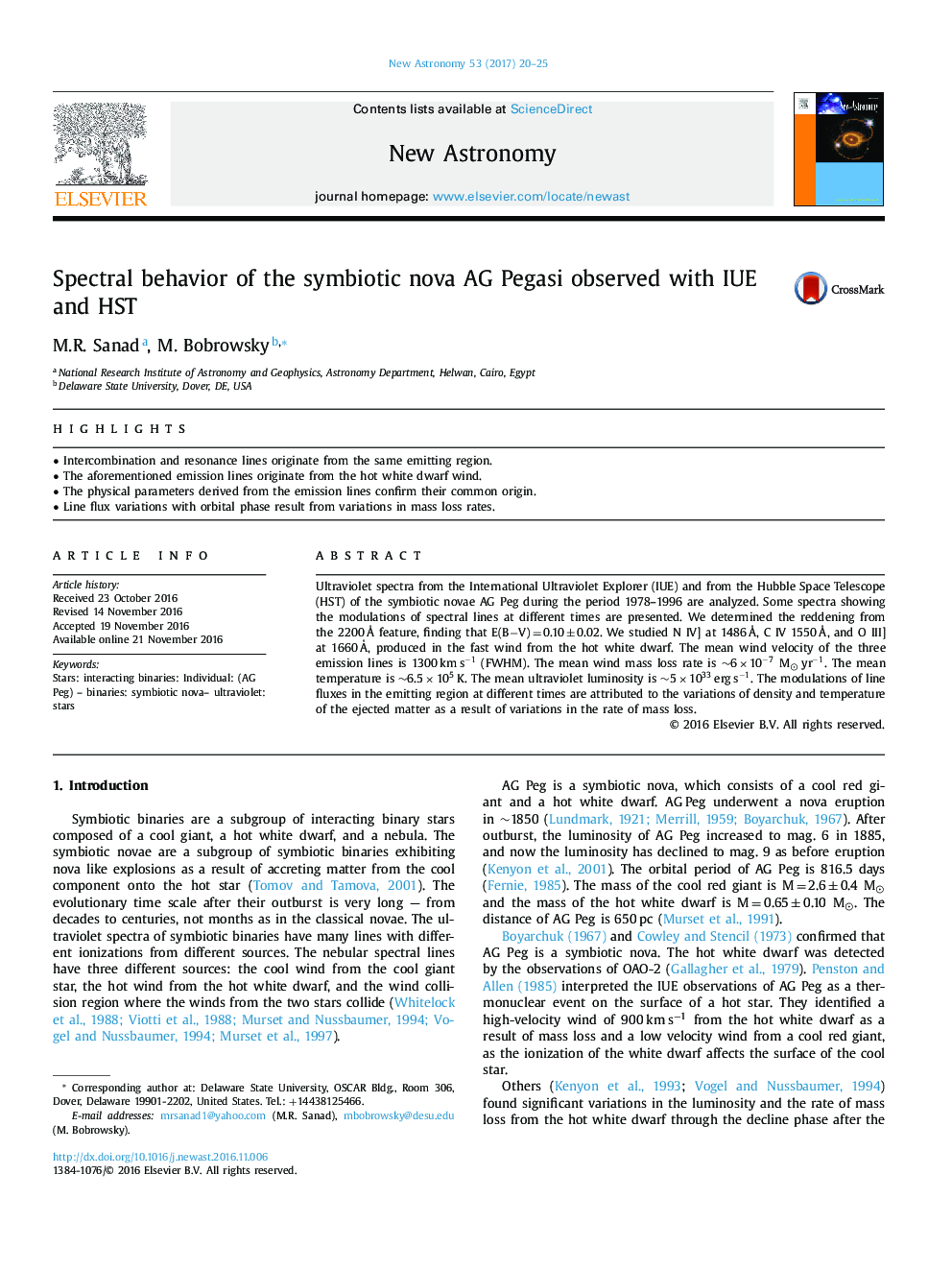| Article ID | Journal | Published Year | Pages | File Type |
|---|---|---|---|---|
| 5487803 | New Astronomy | 2017 | 6 Pages |
Abstract
Ultraviolet spectra from the International Ultraviolet Explorer (IUE) and from the Hubble Space Telescope (HST) of the symbiotic novae AG Peg during the period 1978-1996 are analyzed. Some spectra showing the modulations of spectral lines at different times are presented. We determined the reddening from the 2200Â Ã
feature, finding that E(BâV) =â0.10â±â0.02. We studied N IV] at 1486 Ã
, C IV 1550Â Ã
, and O III] at 1660Â Ã
, produced in the fast wind from the hot white dwarf. The mean wind velocity of the three emission lines is 1300 km sâ1 (FWHM). The mean wind mass loss rate is â¼6âÃâ10â7 Mâ yrâ1. The mean temperature is â¼6.5âà105 K. The mean ultraviolet luminosity is â¼5âà1033 erg sâ1. The modulations of line fluxes in the emitting region at different times are attributed to the variations of density and temperature of the ejected matter as a result of variations in the rate of mass loss.
Related Topics
Physical Sciences and Engineering
Physics and Astronomy
Astronomy and Astrophysics
Authors
M.R. Sanad, M. Bobrowsky,
